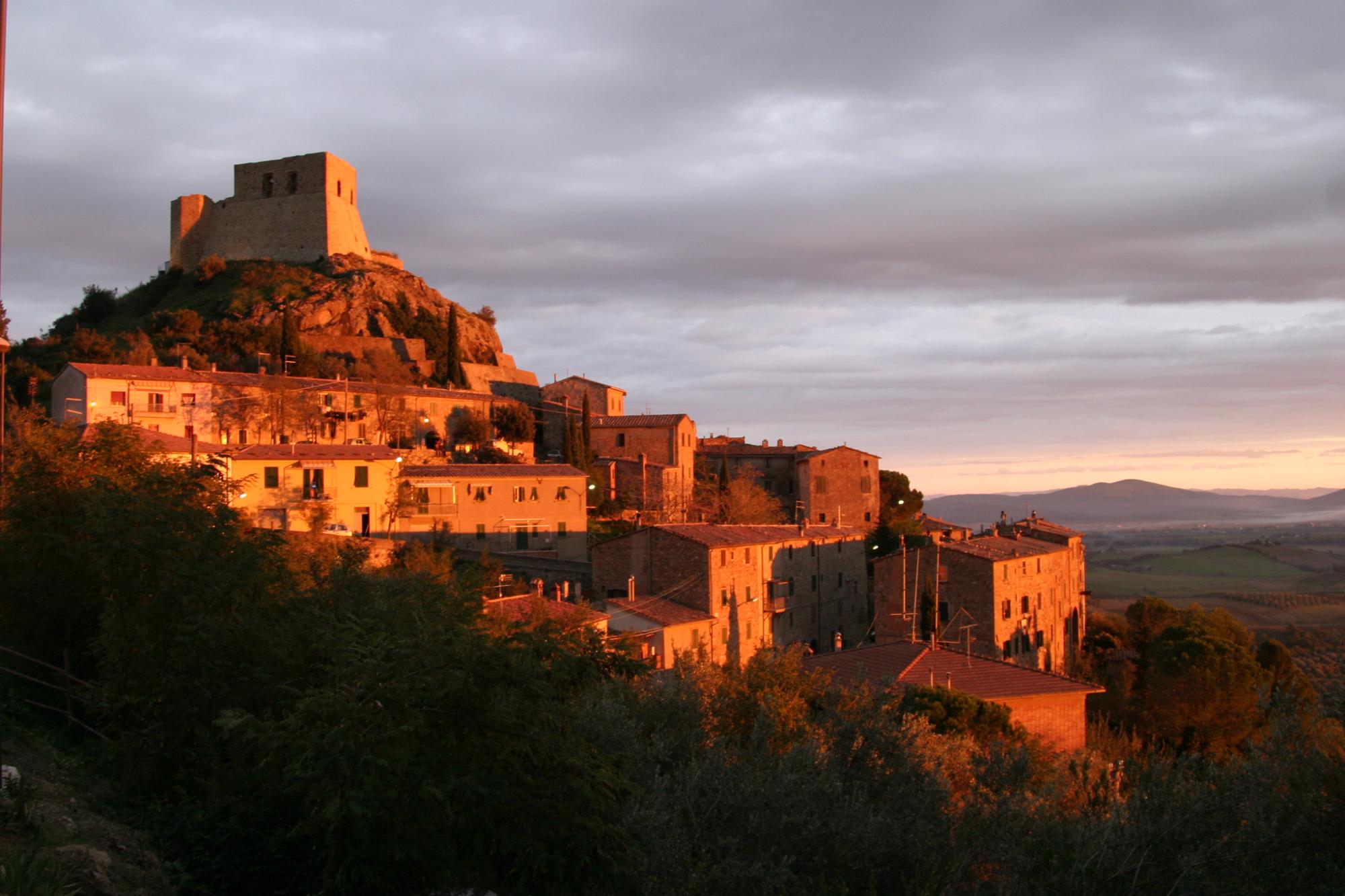
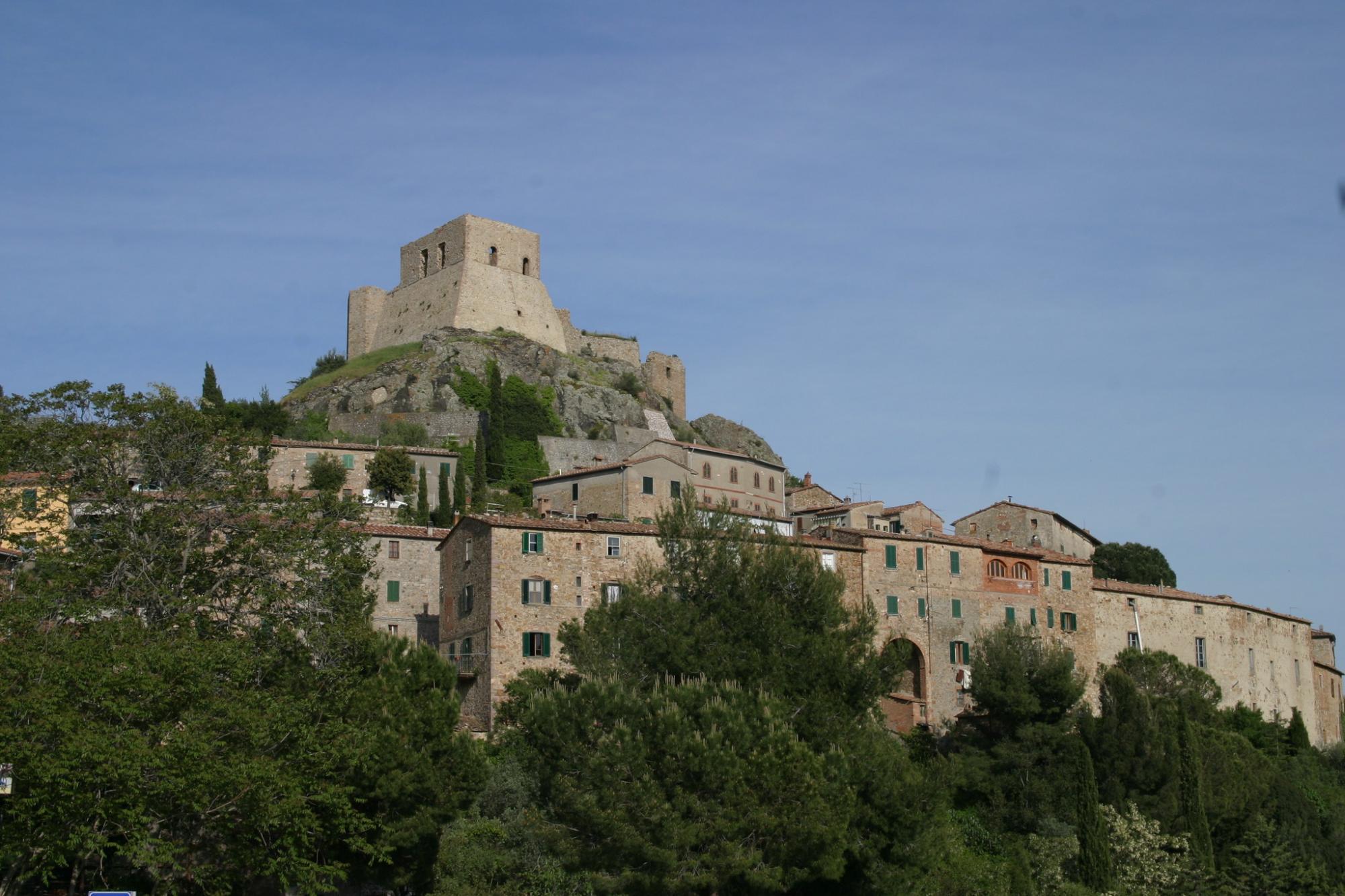
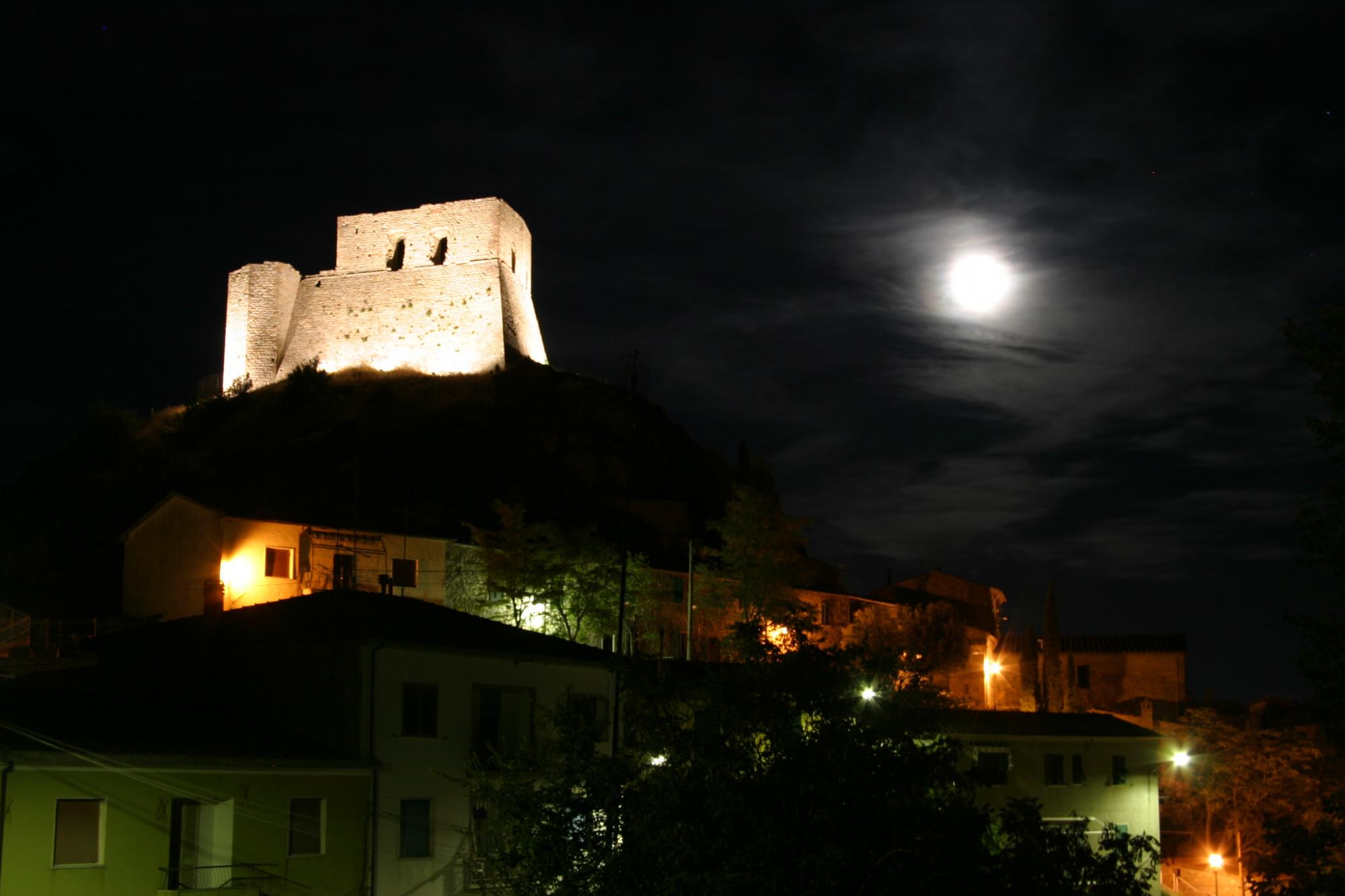
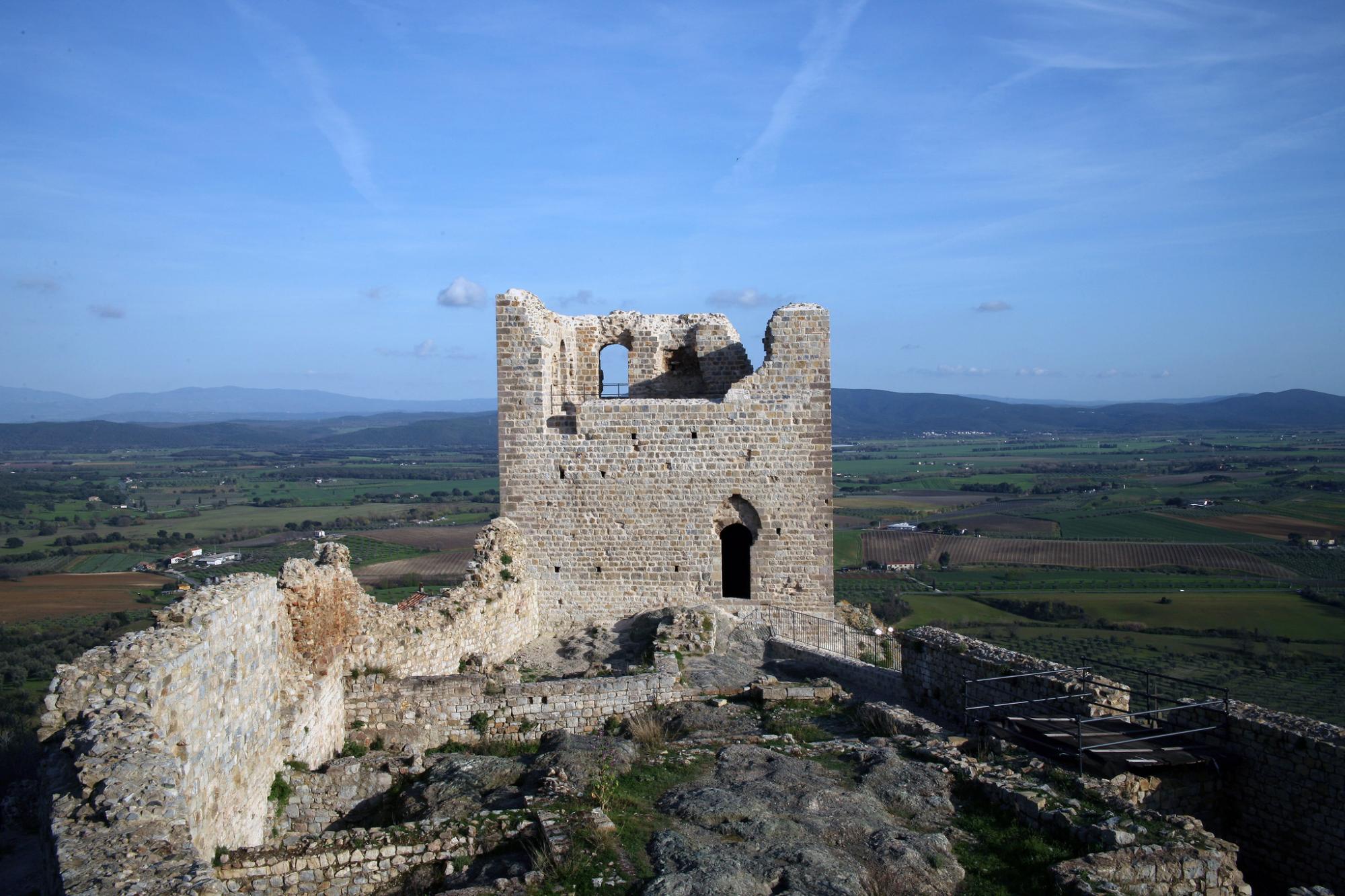
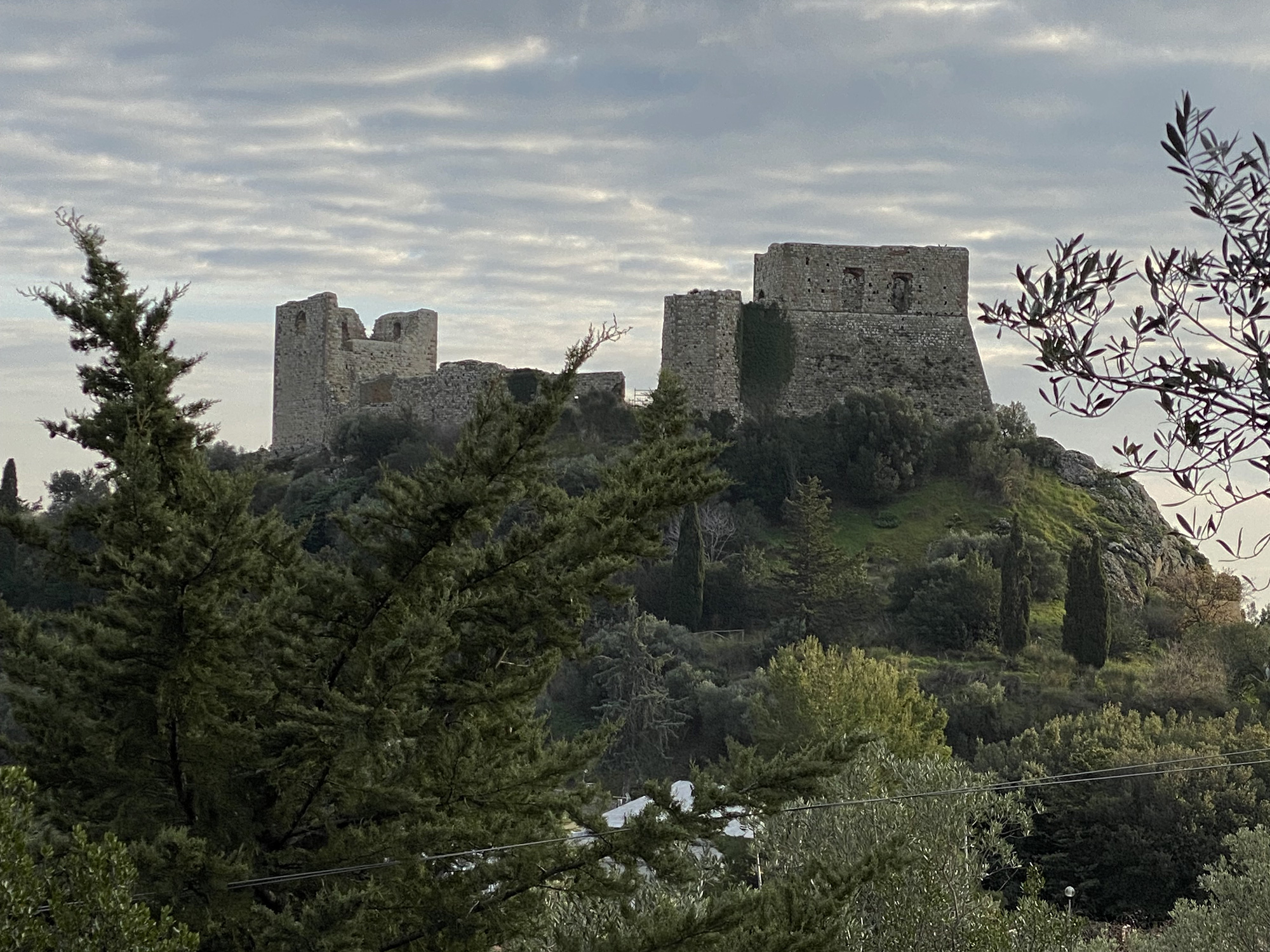
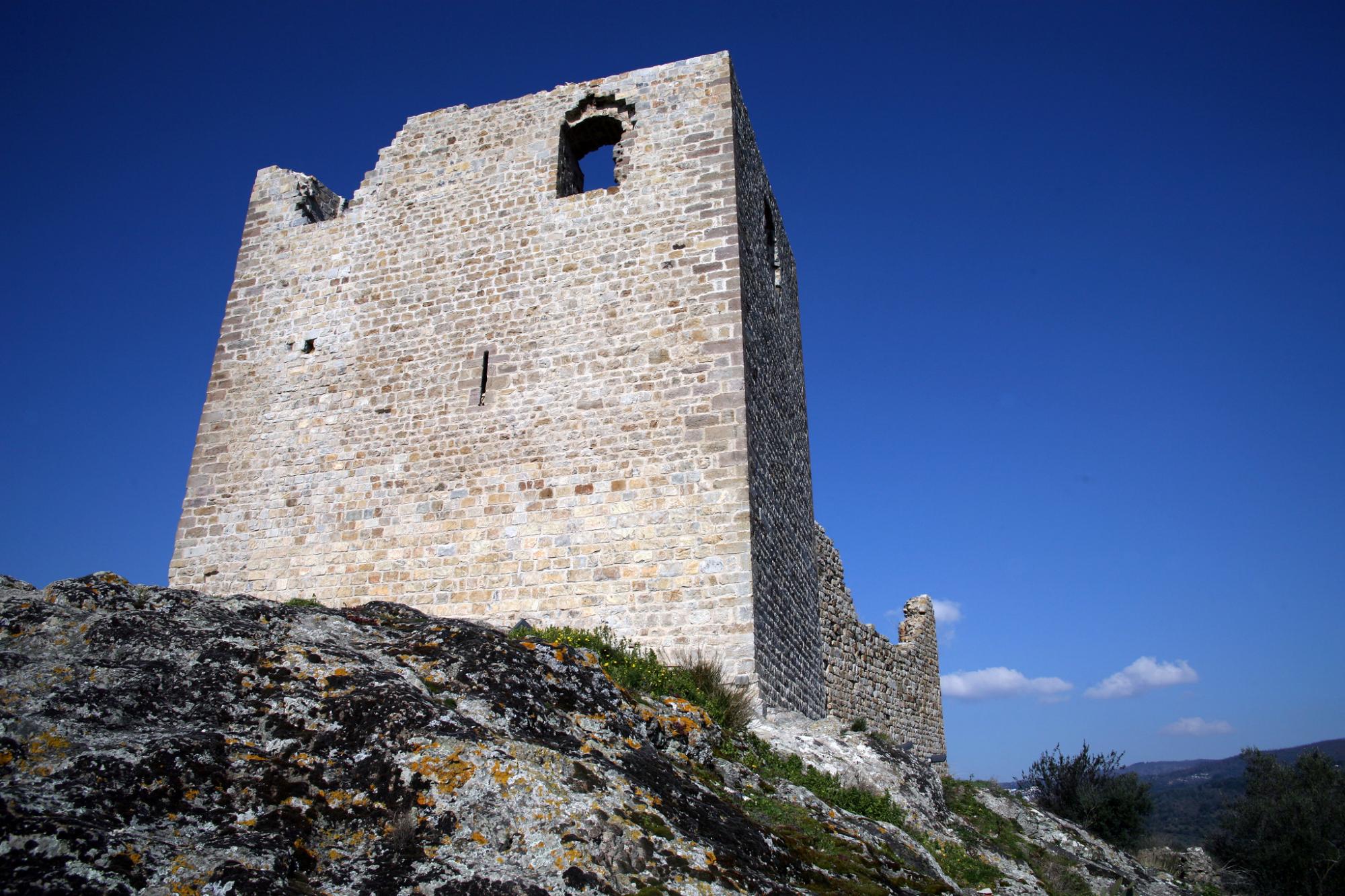
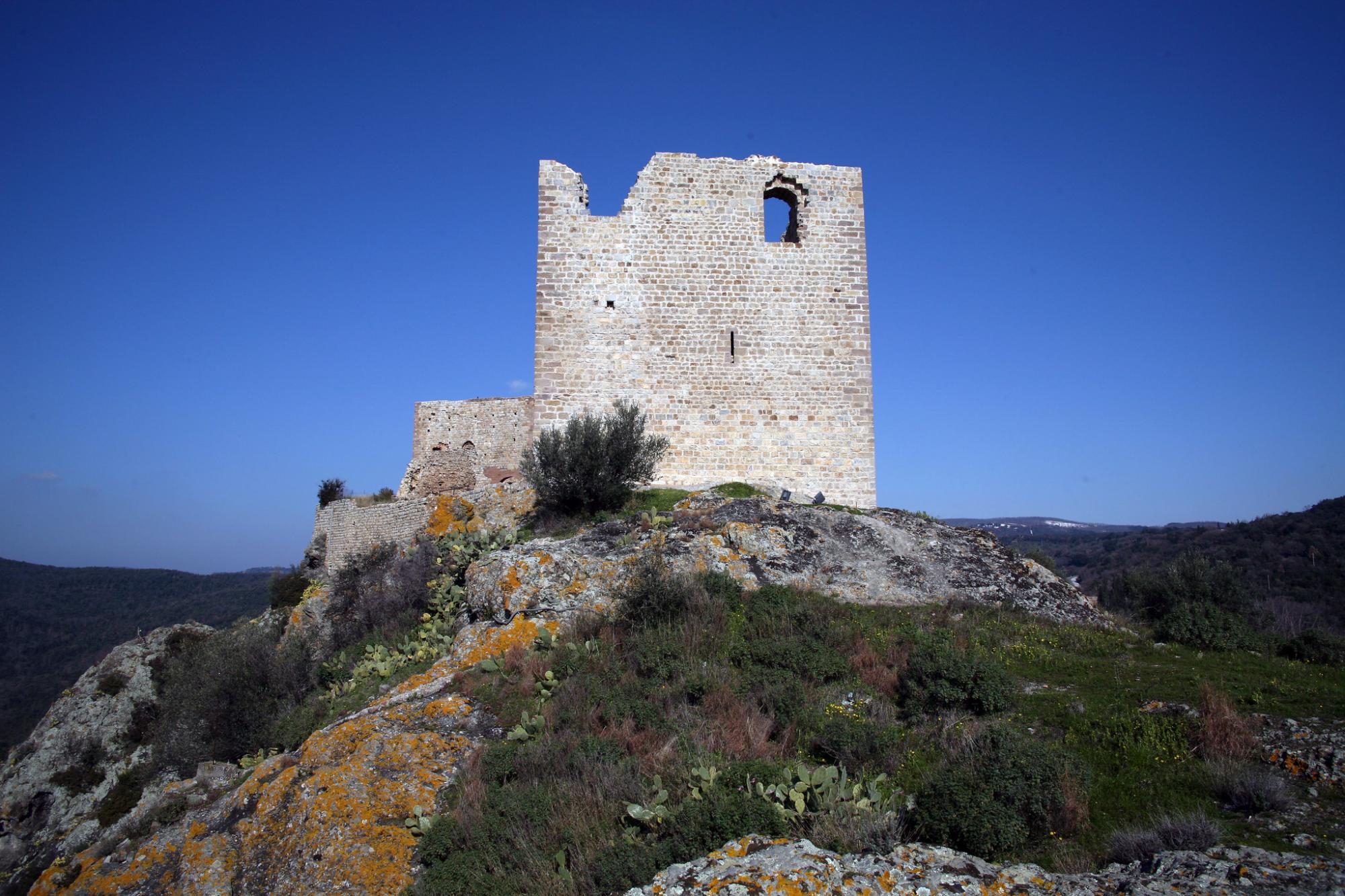
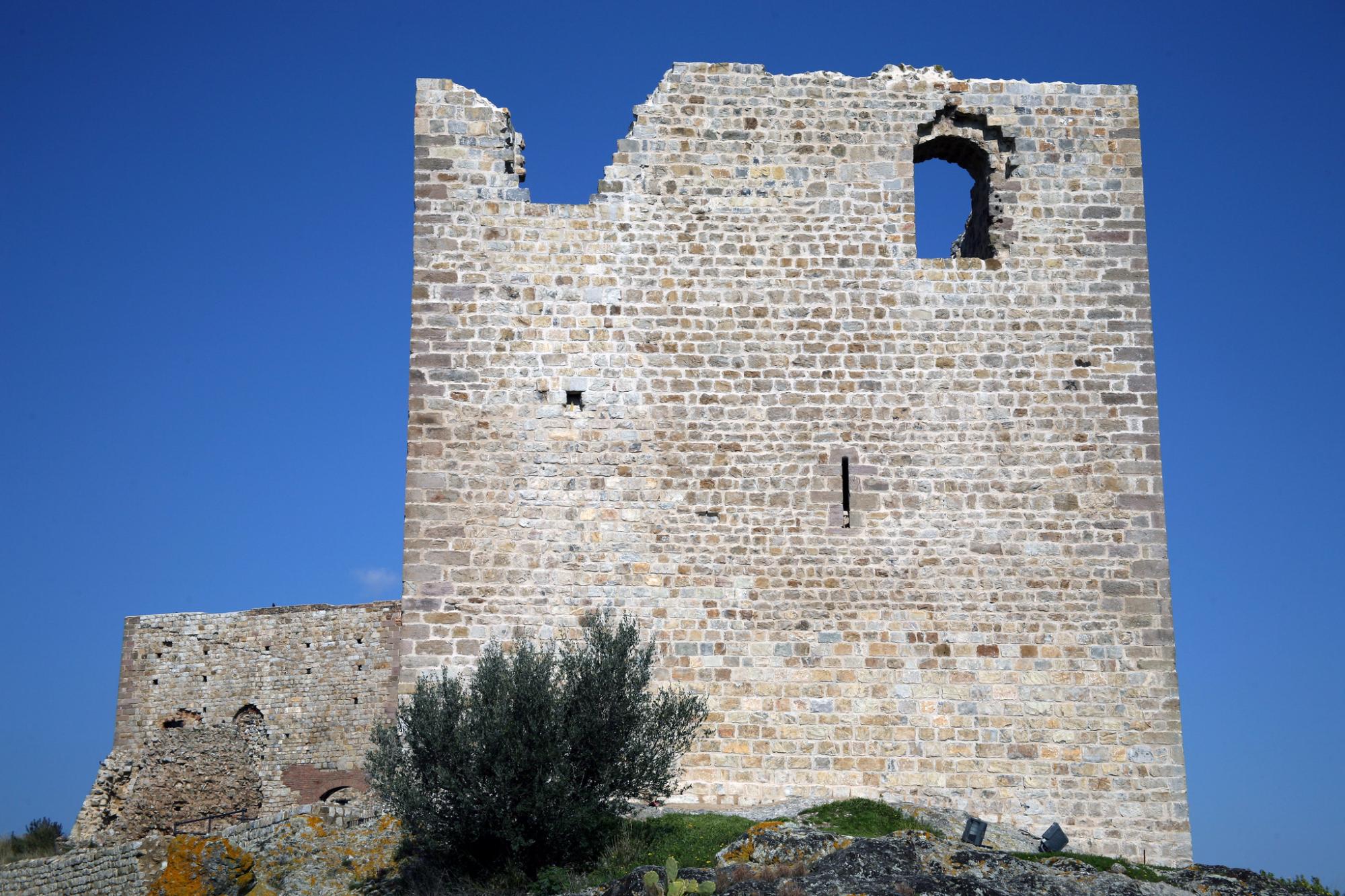
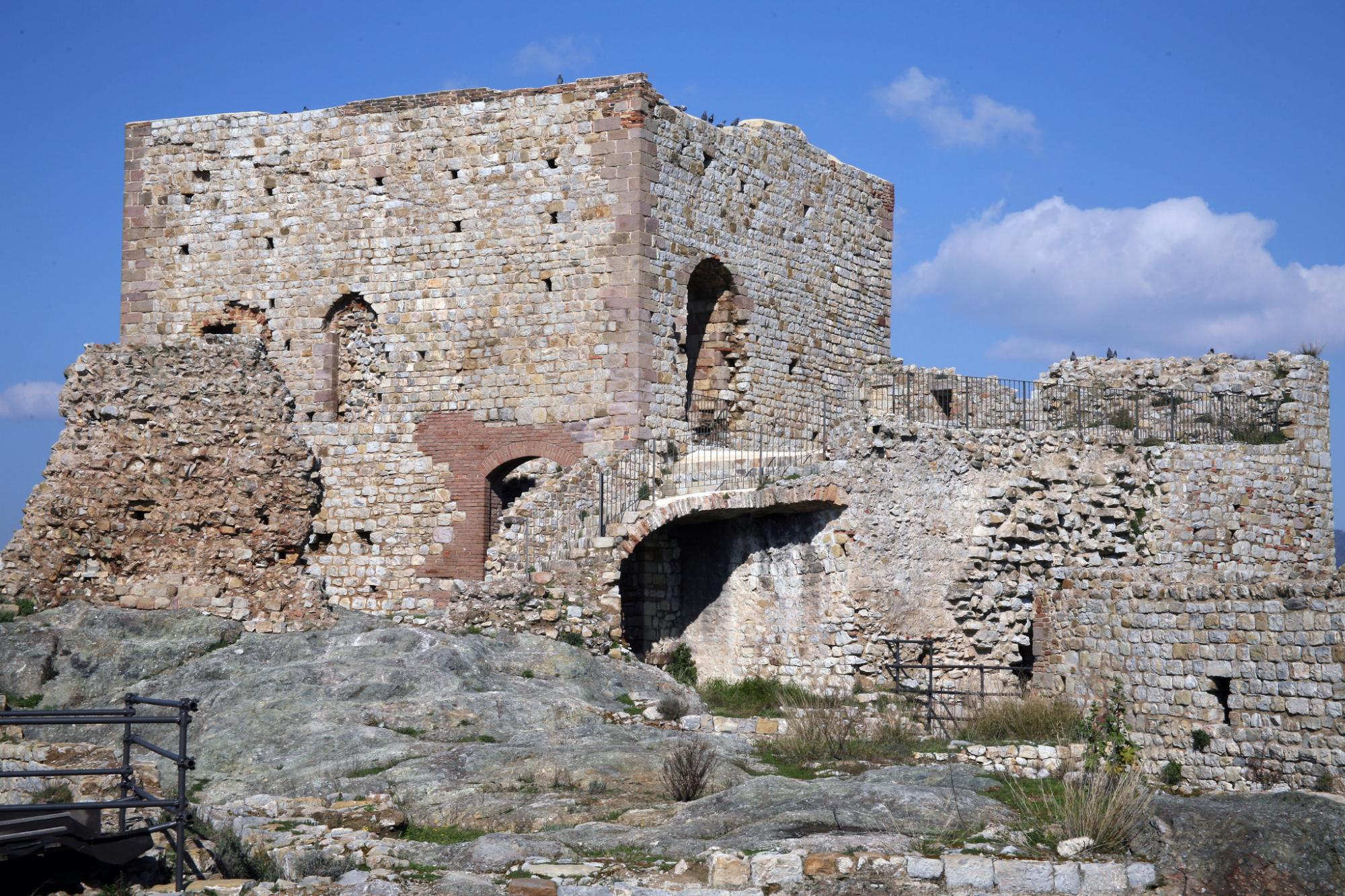
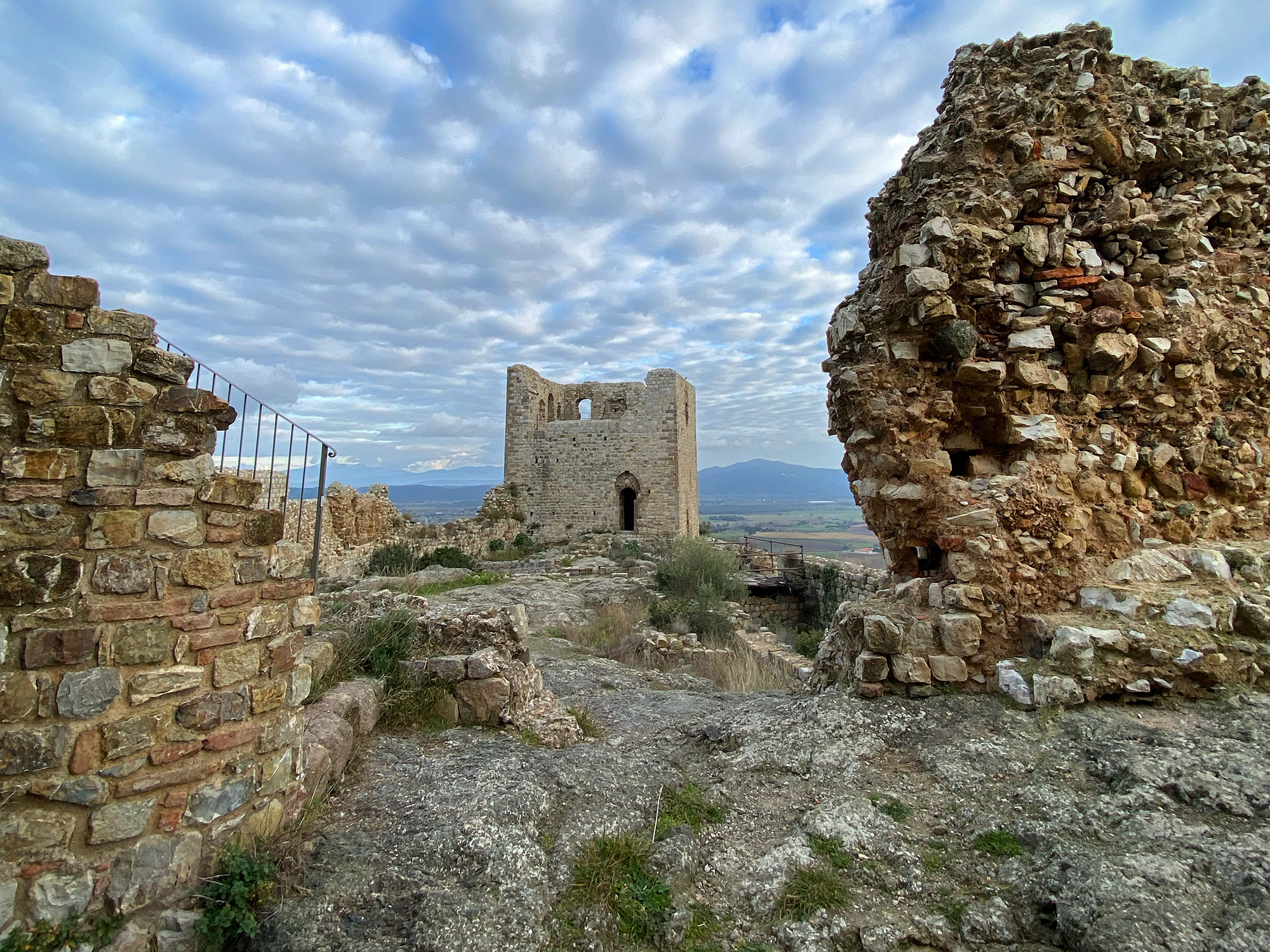
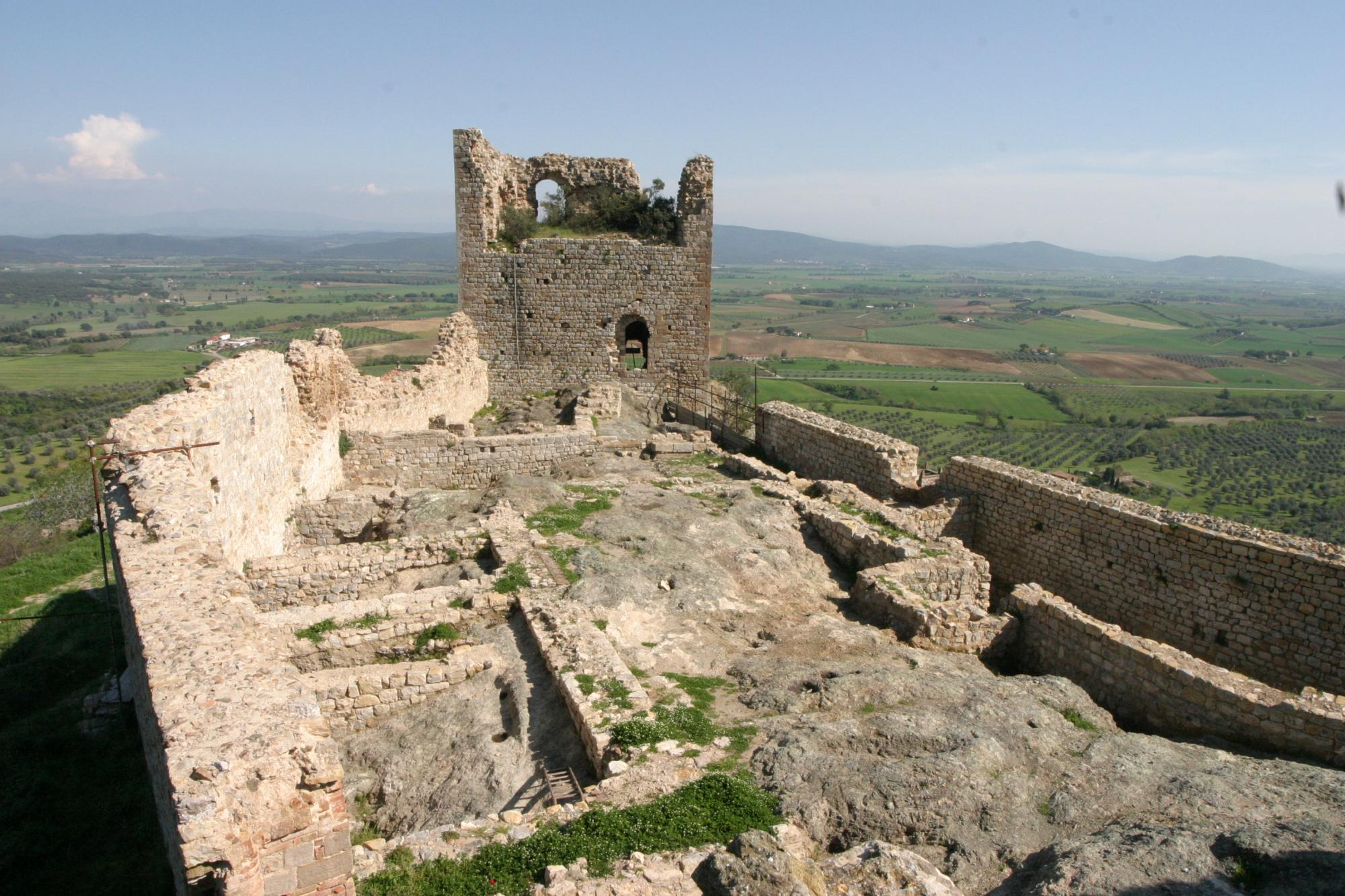
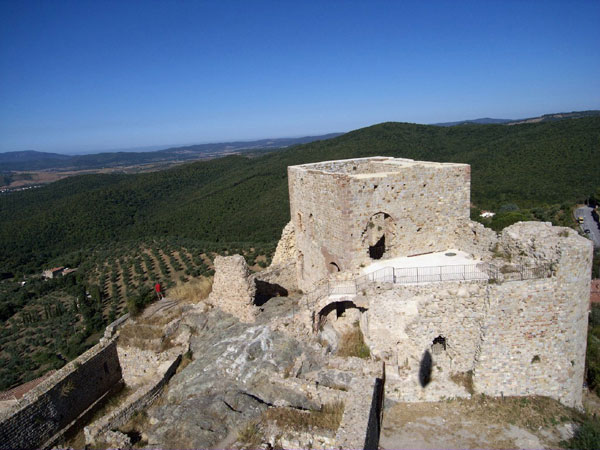
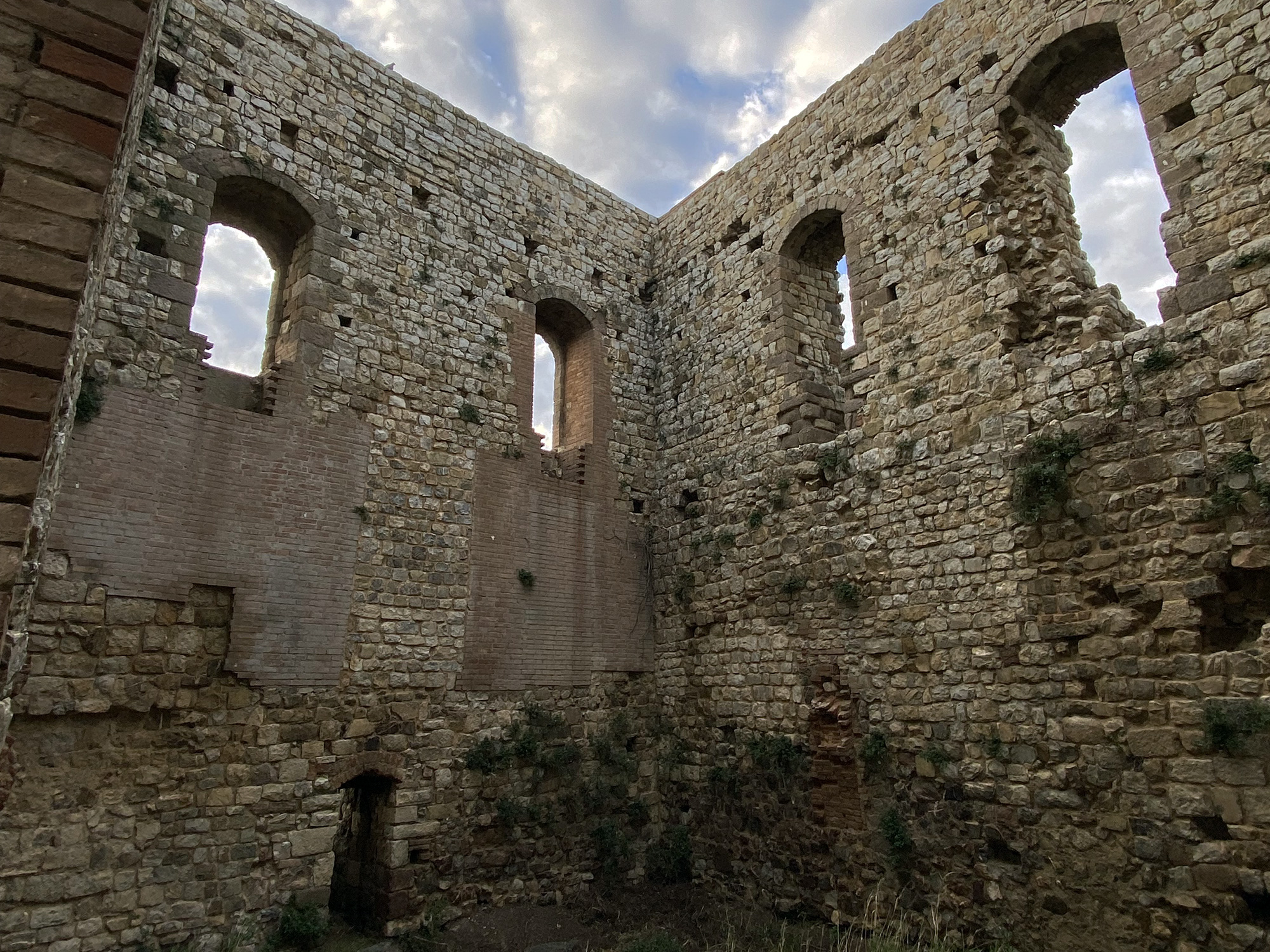
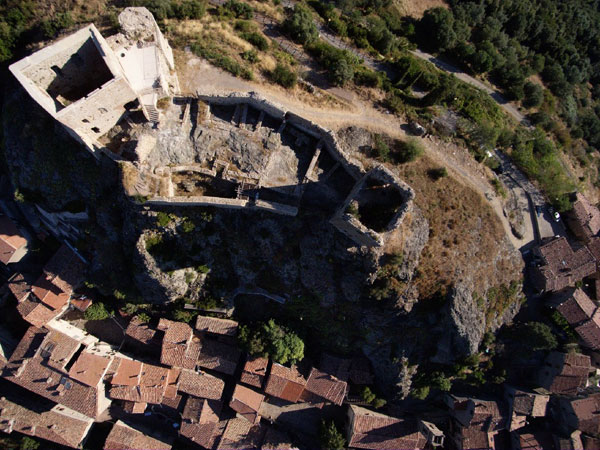
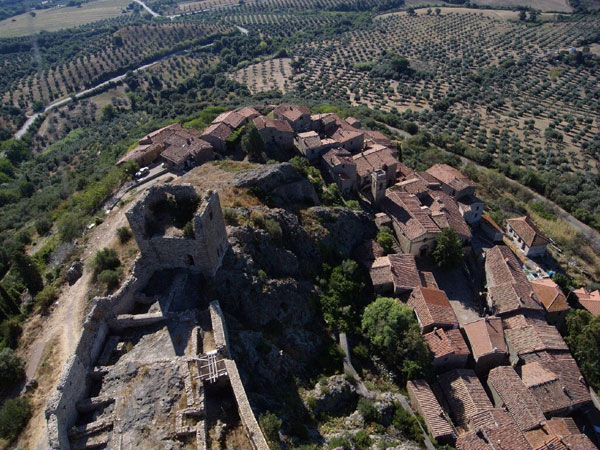
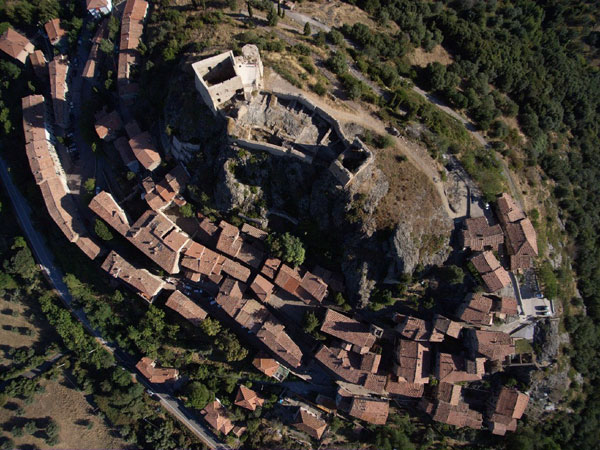
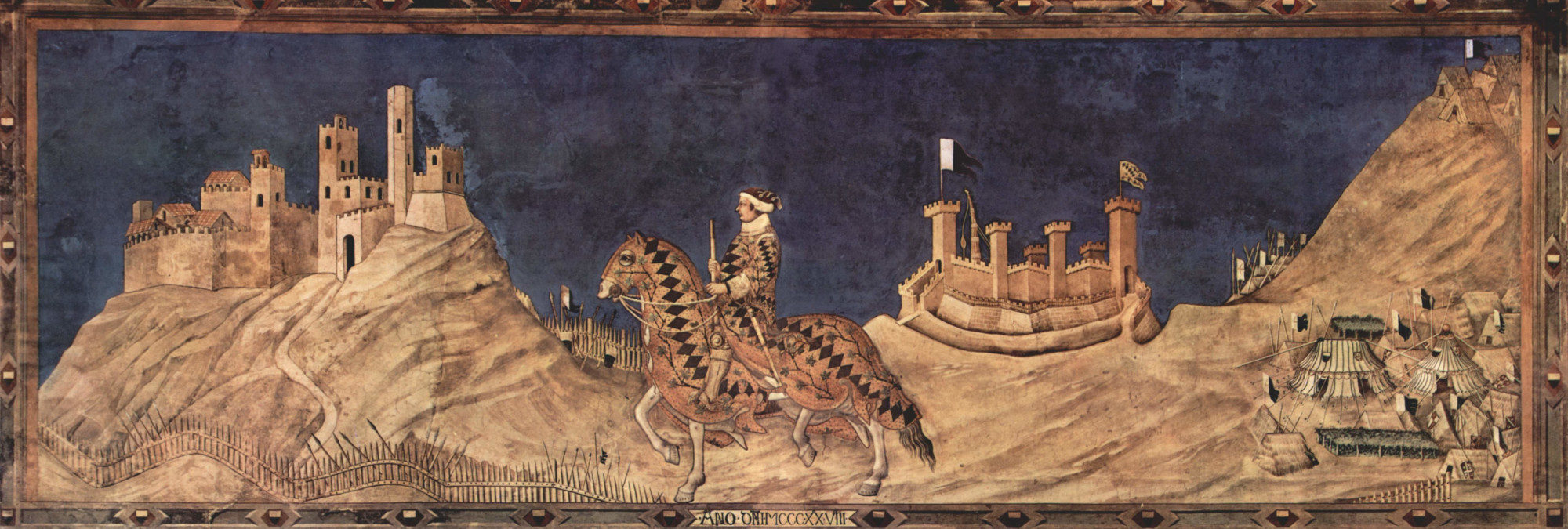
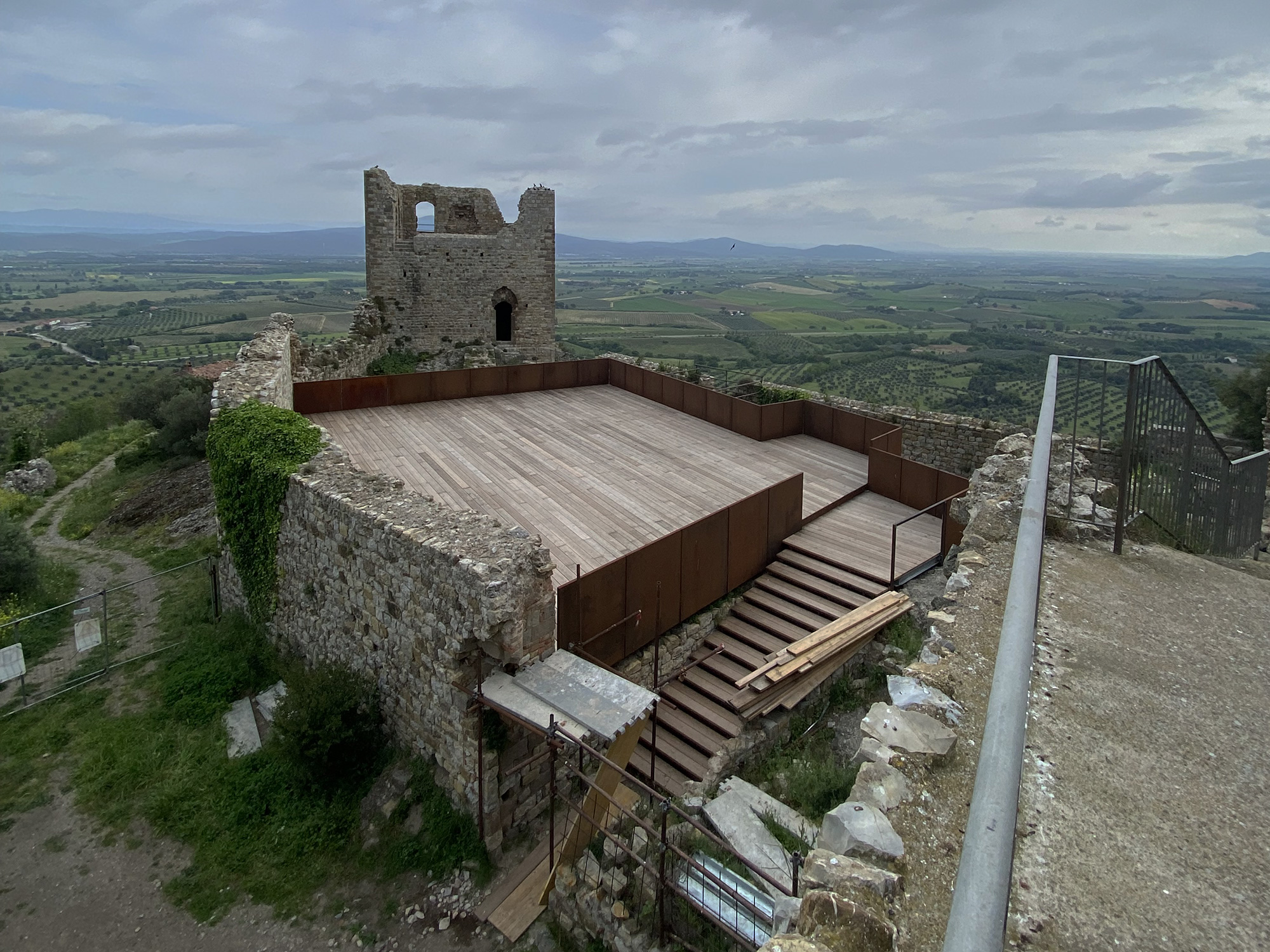
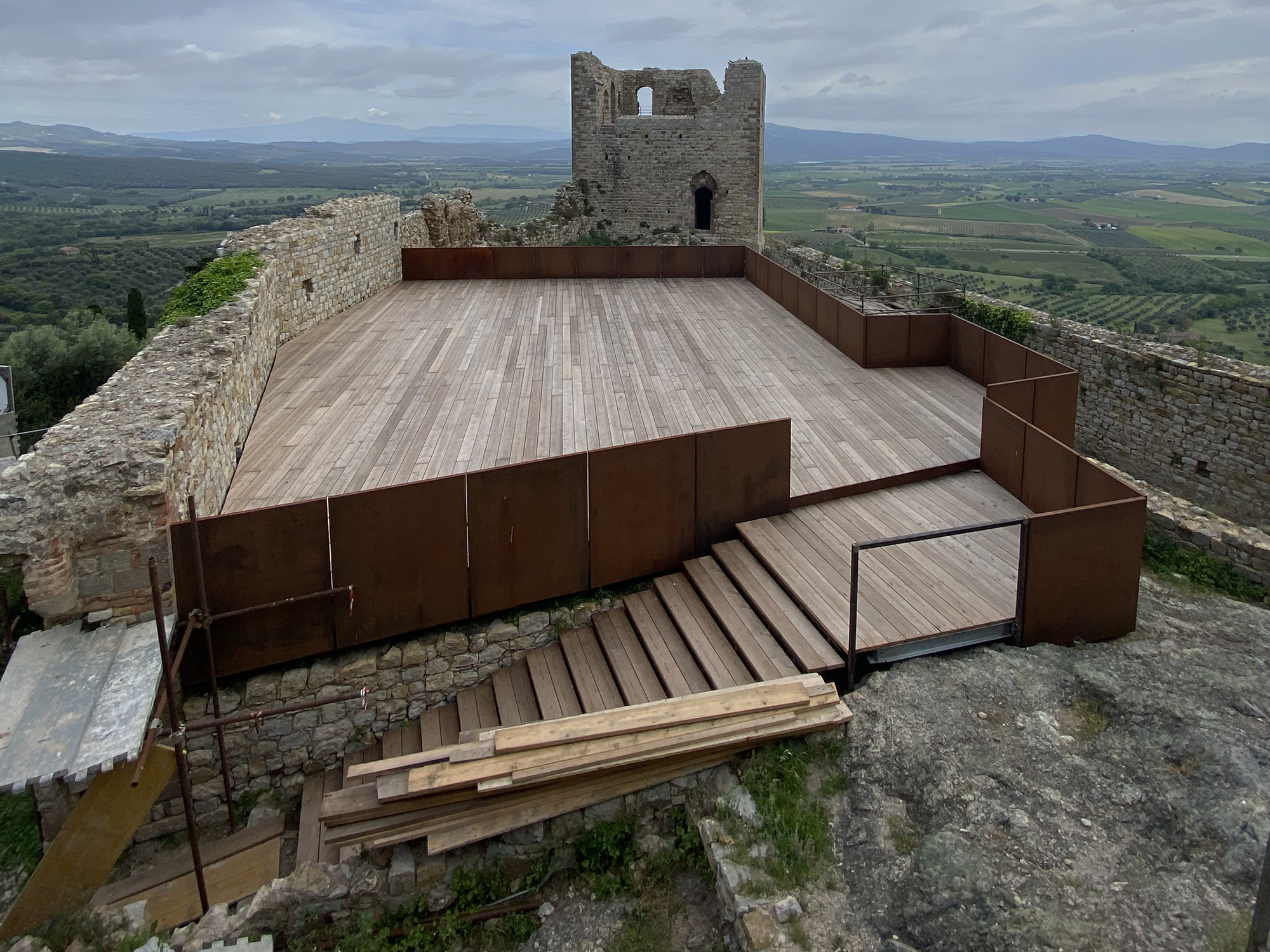
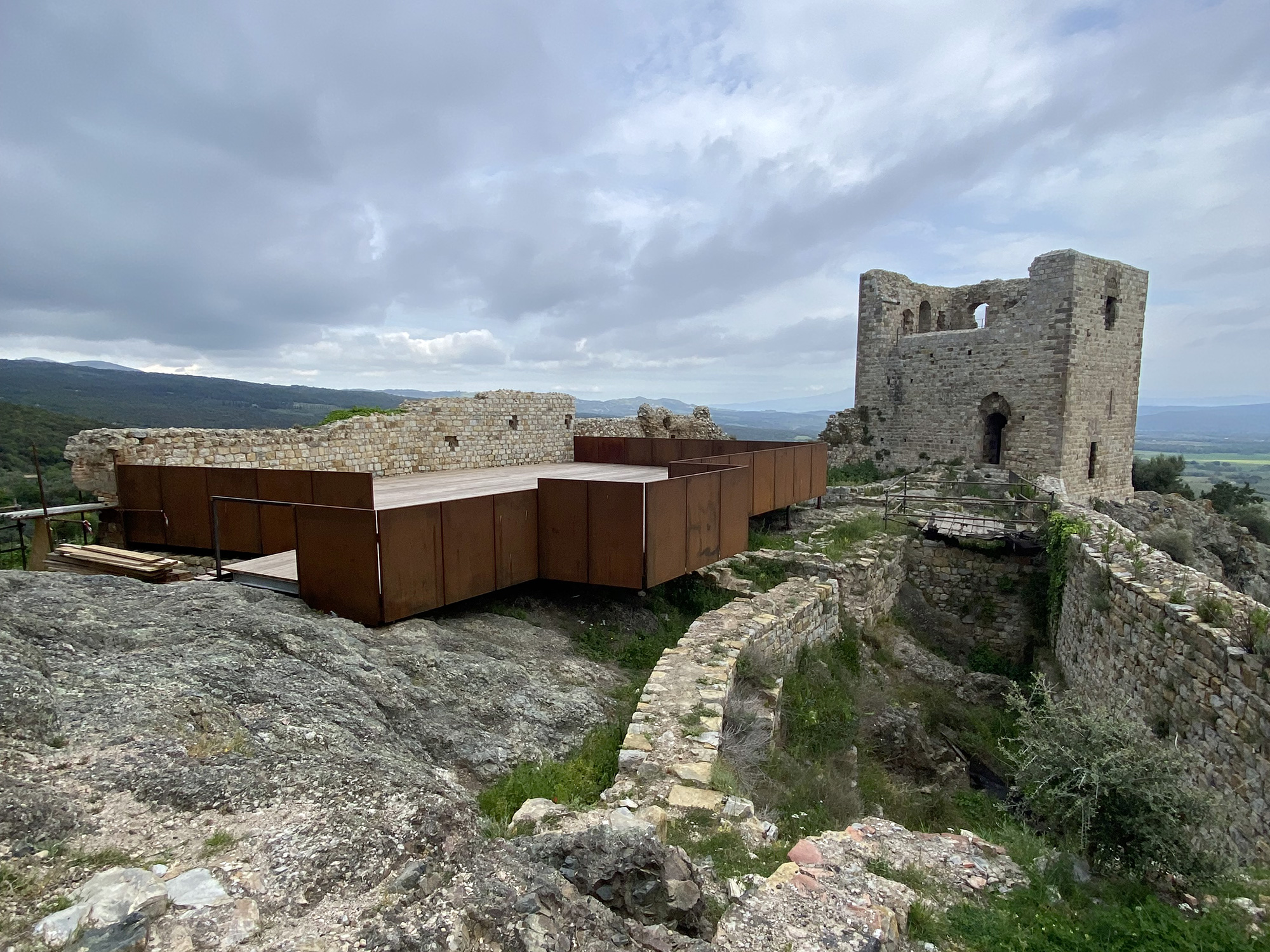




















How to reach
The castle of Montemassi rises in the municipality of Roccastrada, province of Grosseto, on a hill 280 m. high, at the borders of the northern part of the grossetana lowland. It can be reached from north (Florence) following the motorway Florence-Siena until the exit 'Civitella Marittima' then continuing on the road SS223 toward Grosseto. It is around 23 km. far from of the motorway exit.
History
The castle is, without any doubt, the most famous monument in the territory of Roccastrada, for its importance as a historical document (it was represented on the famous fresco situated in the public palace of Siena, attributed to Simone Martini) and for the high example of Gothic-style architecture that it represents. The fortification, which crowns a hill above the little hamlet, is composed of two principal parts. At the north, there's the keep with numerous windows, loopholes, and the rest of a polygonal tower. The external coverage and the inside floors were probably made of wood. The building also contains a big water cistern. At the south, we can find the ruins of a square tower with loopholes along its walls and rests of fine internal stone masonry works.
Montemassi is remembered for the first time in history in the year 1076 as the property of a certain Count Ildebrando. During the 13th century, the castle belonged to the powerful Aldobrandeschi family, and among the numerous fortresses that they ruled in the Maremma, it was one of their main strongholds. In 1306, the castle was subdued to the Pannocchieschi family, which had numerous territories in the northwestern part of Tuscany. In the year 1328, with the support of Castruccio Castracani of the Antelminelli, the castle revolted against Siena, but the powerful Sienese army reconquered, after a long siege, the fortress (this is the event celebrated by the fresco of Simone Martini above). The Republic gave the castle in fief to the Salimbeni family (see also Rocca of Tentennano); they lost it in 1375 after a failed rebellion against the central power.
Subsequently, the castle was sold and maintained for seven years to Mino Verdelli for 800 Florins; it then passed again to the Republic of Siena. In 1404, it was decided to dismantle the fortification to avoid that some rebels would use it as a base to oppose the Sienese dominion.
Ferdinando II of Tuscany, with a document dated September 19, 1632, assigned Montemassi in fief to Giovanni Cristofani Malaspina da Mulazzo. On April 7th, 1770, the Malaspina sold the castle to the Marquis Domenico Cambiaso da Genova, and it was left to ruin. Today, the whole complex lies in a state of degradation.
The historical center of Montemassi is very picturesque and still maintains today the aspect of a compact medieval hamlet in 'pine-cone' form; there are no more traces of the city walls, with the exception of a gate, that once were connected with the castle.
During July 2007, the external restoration of the Palace/Keep was completed and the staircase that leads to the panoramic platform above the water cistern was secured. In June 2008, the Municipality acquired the South Tower (or A Tower), and 250.000 euros were assigned for its restoration and new archeological excavations. The restoration began in November 2008 and ended in January 2010.
July 2023 saw the completion of questionable redevelopment and enhancement work on the area inside the Montemassi Castle, which will once again be safely usable for cultural events organised by the municipal administration. The castle will also be able to be used for the celebration of civil marriages, as it is included among the valuable buildings where it will be possible to get married. However, the stage has completely obliterated the underlying archaeological context (the apsidal church and various burials that came to light during archaeological investigations in the early 2000s), making the castle's history unusable. The tower and walls are currently left out of the intervention. In my personal opinion, at the centre of the courtyard is a historically inappropriate installation in terms of size and location (you can see for yourself by viewing the last three photos in the gallery).
Aerial photos used under permission by Opaxir: https://www.flickr.com/photos/opaxir/
More info & notes
Montemassi from the air: